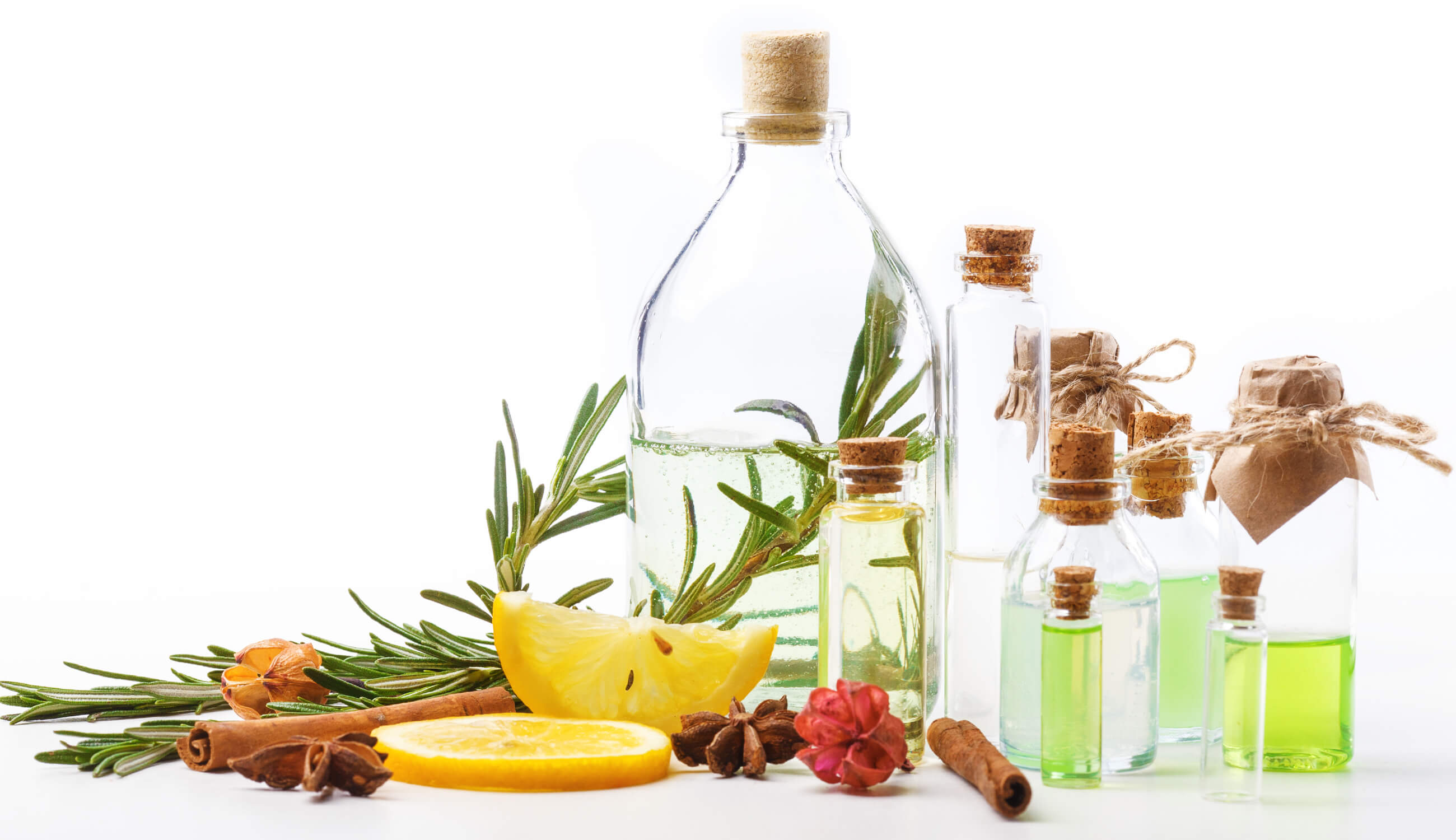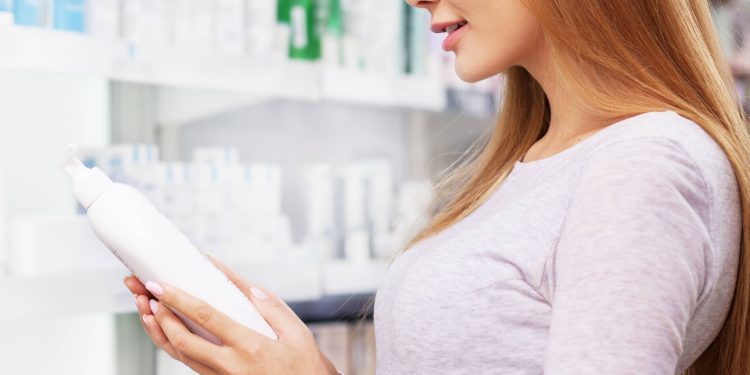Revealing the mystical language of the ingredient list: INCI, active ingredients, and more
Posted on March 31, 2024 Written by: 100% PURE®

Have you ever read the list of ingredients on your favorite beauty product–whether it be a Multi-Vitamin + Antioxidants Potent PM Serum or your Maracuja Mascara–and wondered what the names mean, or how much of each ingredient is included? When it comes to personal care products like makeup, skin care, and hair care, the ingredient lists are more or less a language all their own. The good news is that you can learn this language pretty quickly – we’ll show you how!
The fact that you’re reading this is a testament to how beauty enthusiasts have become more informed than ever when selecting the right product for their needs. Those purchasing skin care and makeup still care about results, but perhaps even more about what exactly what ingredients they’re applying on a daily basis.
In order to understand the list of ingredients on your product, it all starts with understanding the INCI.
The acronym INCI stands for “International Nomenclature Cosmetic Ingredient”. This is the standard by which cosmetic ingredients are named and categorized in the United States. INCI names are shown out of parentheses, and can be scientific names, Latin names, or English words.
Regulated by the Personal Care Products Council (PCPC), the INCI is the system of names given to cosmetic ingredients. This system helps to provide a sense of clarity, standard, and accuracy in the beauty industry – while helping to keep consumers informed.
The bottom line: INCI ensures that all ingredients are referred to by a specific name when listed on a product.

The INCI is important for cosmetic professionals because it allows dermatologists and scientists to identify the ingredients in a product. Based on a standard description and name, they can successfully document the effects of an ingredient in a way that members of the community can understand.
Chemists and formulators aren’t the only ones who need INCI; consumers can also better understand a product after reading the INCI. Rather than rely on what a company tells you in their marketing messaging, you can see for yourself if the product is worth it – by simply reading the ingredient list. Your understanding of the INCI will improve as you learn more about the most recurring ingredients.
That being said, it’s important to note that just because something is named by the INCI, it doesn’t guarantee an ingredient’s reputability or quality. The INCI exists purely to create a standard language, without causing any confusion. It also helps beauty experts (like us) know exactly what they don’t want in their formulas.
Another thing to know when reading a cosmetic list of ingredients: you’re looking at a two names for a single ingredient. For example, vitamin A and retinol are, for all intents and purposes, the same. However, “vitamin A” is considered this ingredient’s common name, whereas “Retinol” is the INCI name.
Other examples of INCI and common names on a list of ingredients include:
|
Common Name |
INCI Name |
|
Vitamin E |
Tocopherol |
|
Cocoa Bean |
Theobroma Cacao |
|
Vitamin C |
Ascorbic Acid |
|
Green Tea Extract |
Camellia Sinensis Leaf Extract |
|
Sweet Almond Oil |
Prunus Amygdalus Dulcis |
|
Grape Seed |
Vitis Vinifera |

Some personal care products, such as acne products and sunscreens, are considered over-the-counter drugs. As such, the ingredients listed on these products will be categorized as either “active” or “inactive” ingredients.
This may sound confusing, at first: shouldn’t all of the ingredients be active in a product? Technically, yes, but in truth, some ingredients play a larger role than others.
Titanium dioxide, for instance, is always listed as an active ingredient in sunscreens like our Yerba Mate Mist SPF 30 because it plays a major role in protecting your skin from the sun, which is the central purpose of the product. Likewise, an acne treatment might list salicylic acid as an active ingredient, because its primary function is to eliminate acne.
Inactive ingredients, meanwhile, are ingredients that perform supporting functions, such as moisturizing the skin or decreasing the appearance of pores.
In the United States, the ingredient list is regulated by the FDA. As such, it follows a specific hierarchy of order: all ingredients that make up more than 1% of the product are listed first, and in order from highest to lowest. This means that the most abundant ingredient in the product should always be listed first.
Meanwhile, any ingredients under 1% can be listed in any order, with any dyes or colorants listed at the end.
Buyer beware: any added scent – even if there’s more than one – can be listed under the singular title “fragrance”. For those with skin sensitivities or allergies, this is important to note!
Hierarchy in a list of ingredients is broken down like this:
First Third of Ingredients: ~80% of the total formula
Second Third of Ingredients: ~15-19% of the total formula
Final Third of Ingredients: ~1-5% of the total formula
With this hierarchy in mind, you can begin to recognize the quality of certain products purely based off what’s listed and in what order. For instance, if a product endorses that it carries beneficial ingredients like tea tree and willow, you’d want to check the ingredient list and make sure that those plant-based goodies are listed near the top.
Similarly, if a product is advertised for a special ingredient and it’s listed last, you know that it’s heavily diluted. Especially one of the first ingredients is actually water, or a cheaper filler oil.
Water is often the second or third ingredient in products, indicating that it’s one of the most abundant ingredients in the product. Generally, these products are low-quality, and the benefits won’t be as concentrated.
Cosmetic companies will often try to get you to buy a product by slapping on glittering generalities like “natural”, “hypo-allergenic”, or “fragrance-free”. If you take a closer look at the list of ingredients, the contents might suggest otherwise.
For beauty products, the only thing regulated by the FDA is the ingredients and the way they’re listed. A company may find it easy to make bold claims, even if these claims may not even be true. Medicine/drug claims adhere to much stricter regulations, but for beauty products, we’d recommend flipping to the back of the bottle before believing any bold claims.
While the ingredient list on the back of your skin care products may appear intimidating at first glance, understanding their meaning is simply a matter of research. That is, understanding certain ingredients and why they appear more frequently than others, and how to gauge the amount used – and what it can mean for your skin or hair.
Rather than take beauty companies’ claims to heart – read the list of ingredients and make up your own mind!
What does it mean if an ingredient is listed near the beginning of the ingredient list?
Ingredients in products, particularly in the cosmetics and food industries, are listed in descending order of predominance by weight. This means that the ingredients used in the greatest amounts are listed first. So, if an ingredient is listed near the beginning, it signifies that it is one of the main components of the product. This practice helps consumers understand the concentration of specific ingredients within a product, which can be important for efficacy, allergies, or personal preference reasons.
How can I identify if a product is truly “fragrance-free” or “hypoallergenic” from the ingredient list?
To determine if a product is truly “fragrance-free,” look for terms like “fragrance,” “parfum,” or specific chemical names associated with fragrances in the ingredient list. A genuine fragrance-free product should not contain any of these. However, absence of the word “fragrance” doesn’t always guarantee the product is free from scent-producing ingredients; some natural oils and extracts also impart fragrance.
“Hypoallergenic” means that the product is less likely to cause allergic reactions, but it is not a guarantee. There is no standardized regulation for hypoallergenic products, so scrutinize the ingredient list for known allergens or irritants. Products labeled hypoallergenic often avoid common allergens like fragrances, parabens, and certain preservatives, but individual sensitivities vary greatly.
Are ingredients with Latin or scientific names necessarily better or safer than those with common English names?
No, ingredients with Latin or scientific names are not necessarily better or safer than those with common English names. The use of Latin or scientific names, particularly in skincare and cosmetic products, follows the International Nomenclature of Cosmetic Ingredients (INCI) standards. This practice ensures consistency and precision in ingredient identification across countries and languages. These names often refer to plants (using the botanical Latin name), chemicals, and other compounds in their scientifically recognized terms. The safety and efficacy of an ingredient depend on its nature and concentration in the product, not the language used to describe it.
If a product claims to contain a beneficial ingredient like vitamin C or green tea, how can I verify how much of that ingredient is actually present?
Verifying the exact amount of a beneficial ingredient like vitamin C or green tea in a product can be challenging for consumers since manufacturers are not required to disclose the concentration of each ingredient on the label. However, the ingredient list can offer some clues:
- The closer an ingredient is to the beginning of the list, the higher its concentration in the formula.
- Some products may highlight the percentage of a key ingredient on the packaging, especially if it’s a selling point (e.g., “contains 10% vitamin C”).
- For detailed information, you might need to contact the manufacturer directly or consult third-party testing if available.
Why are some ingredients listed under their common names while others use the INCI names?
Ingredients are listed using INCI (International Nomenclature Cosmetic Ingredient) names to provide a standardized, globally recognized system. This system uses scientific names for chemicals, botanical names for plants, and other specific terminology to accurately describe what is in the product. However, common names are sometimes used alongside or in place of INCI names for clarity or marketing reasons, especially when it comes to familiar ingredients that might be more easily recognized by consumers (e.g., “water” instead of “aqua”). The use of common names can make ingredient lists more accessible to the general public, though it may sometimes lead to confusion about the exact nature of the ingredients.













